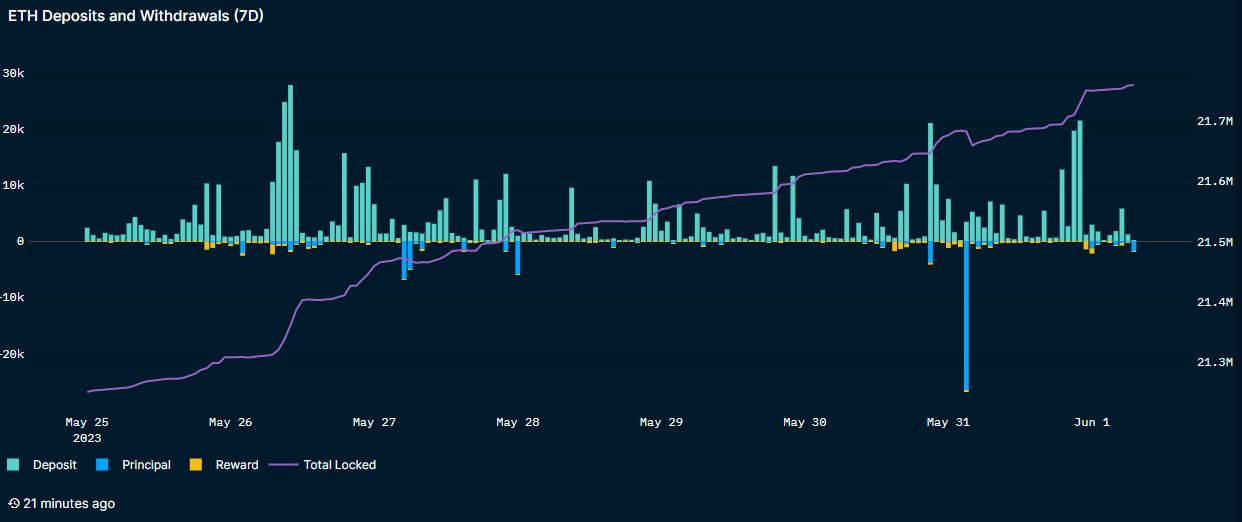Liquid Staking Derivatives Could Become Staking Cartels Warns Ethereum Developer

A lead Ethereum developer has highlighted some of the risks that liquid staking derivatives pose to the Ethereum ecosystem.
On June 1, Ethereum developer Danny Ryan posted a recent article on liquid staking derivatives (LSDs). Those above “critical consensus thresholds” pose risks to the Ethereum protocol, he noted.
“With withdrawals enabled, it’s time to reshuffle,” he said.
Are Liquid Staking Platforms a Danger to Ethereum?
Liquid staking derivatives are protocols such as Lido that offer flexible ETH staking. However, their “decentralized” governance is questionable and could lead to centralization.
Ryan stated that LSD protocols are a “stratum for cartelization” that induce significant risks to the Ethereum protocol. Those allocating capital to these protocols should be aware of the risks associated, he added.
“LSD protocols should self-limit to avoid centralization and protocol risk that can ultimately destroy their product.”
In an extreme scenario, consensus can be exceeded with the staking derivative achieving outsized profits compared to non-pooled capital. This could be due to coordinated MEV (maximal extractable value) extraction, block-timing manipulation, and/or censorship, he said.
“And in this scenario, staked capital becomes discouraged from staking elsewhere due to outsized cartel rewards, self-reinforcing the cartel’s hold on staking.”
Furthermore, deciding who can become a node operator is another avenue for cartelization.
In the case of Lido, the LDO governance token may be the deciding factor, and this could threaten Ethereum. This is because whales and VCs often manipulate DeFi governance.
“Thus the governance token deciding NOs [node operators] can become a self-reinforcing cartelization and abuse of the Ethereum protocol,” Ryan noted.
He concluded with a recommendation that Lido and similar LSD products self-limit for their own sake, and stakers should also have limits.
“Capital allocators should not allocate to LSD protocols exceeding 25% of total staked Ether due to the inherent and extreme risks associated.”
On May 22, Ethereum co-founder Vitalik Buterin cautioned on the dangers of “overloading” Ethereum’s consensus past its core functions. “We should instead preserve the chain’s minimalism, support uses of re-staking that do not look like slippery slopes to extending the role of Ethereum consensus,” he said.
ETH Staking Update
21.7 million ETH are currently staked, according to Nansen data. However, Beaconcha.in reports a much lower figure of 19.1 million.
Lido has the lion’s share of this, which is why it is the biggest threat. Lido currently has 6.95 million ETH staked on the platform, valued at $12.6 billion. This equates to around a third of the total amount of Ethereum staked.

ETH Deposits and Withdrawals. Source: Nansen
Withdrawals have slowed and are currently outpaced by deposits, according to Nansen data.







 Bitcoin
Bitcoin  Ethereum
Ethereum  Tether
Tether  USDC
USDC  Dogecoin
Dogecoin  Cardano
Cardano  TRON
TRON  Bitcoin Cash
Bitcoin Cash  Chainlink
Chainlink  Polygon
Polygon  Litecoin
Litecoin  LEO Token
LEO Token  Dai
Dai  Ethereum Classic
Ethereum Classic  Hedera
Hedera  Cronos
Cronos  Cosmos Hub
Cosmos Hub  Stellar
Stellar  Stacks
Stacks  OKB
OKB  Maker
Maker  Monero
Monero  Theta Network
Theta Network  Algorand
Algorand  NEO
NEO  Gate
Gate  KuCoin
KuCoin  EOS
EOS  Tezos
Tezos  Synthetix Network
Synthetix Network  IOTA
IOTA  Tether Gold
Tether Gold  Bitcoin Gold
Bitcoin Gold  TrueUSD
TrueUSD  Enjin Coin
Enjin Coin  Zilliqa
Zilliqa  Holo
Holo  0x Protocol
0x Protocol  Ravencoin
Ravencoin  Siacoin
Siacoin  Qtum
Qtum  Basic Attention
Basic Attention  Dash
Dash  Zcash
Zcash  Decred
Decred  NEM
NEM  Ontology
Ontology  Lisk
Lisk  Waves
Waves  DigiByte
DigiByte  Status
Status  Numeraire
Numeraire  Nano
Nano  Pax Dollar
Pax Dollar  Hive
Hive  Steem
Steem  OMG Network
OMG Network  Huobi
Huobi  BUSD
BUSD  Ren
Ren  Bitcoin Diamond
Bitcoin Diamond  Bytom
Bytom  Kyber Network Crystal Legacy
Kyber Network Crystal Legacy  HUSD
HUSD  Energi
Energi  Augur
Augur